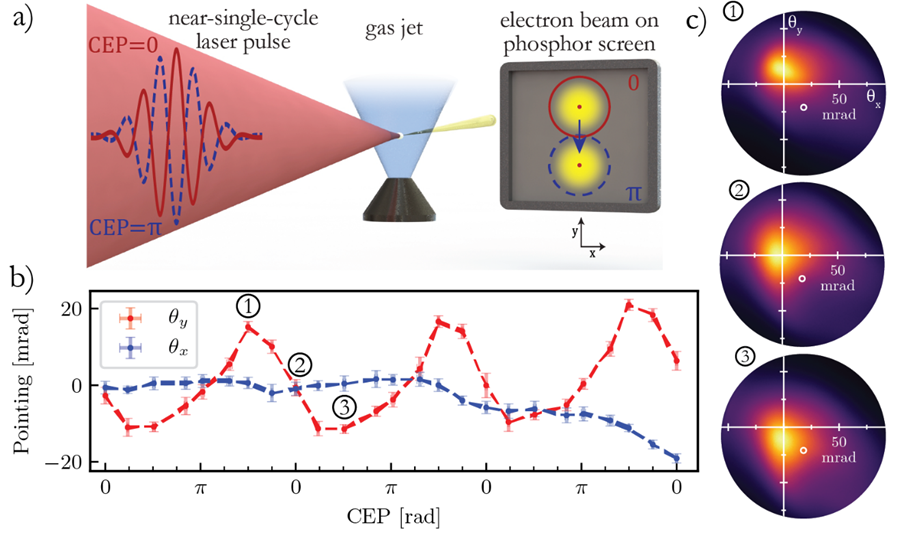Laser wake acceleration allows the construction of very compact laser-plasma particle accelerators, with numerous applications in particle physics, solid state physics and medicine. For this purpose, an extremely short and intense laser pulse is sent into a gas jet. The front of the pulse is sufficient to immediately ionize the atoms of the gas, generating a plasma. The main part of the pulse is so intense that it expels all the electrons from the plasma, creating a wake in the electron density behind the laser pulse, much like the wake of water behind a boat. Under certain circumstances, the electrons begin to "surf" on this wake and are accelerated to near light speeds.
Normally, this process is described using the so-called "weighted-motion" approximation, in which the interaction between the laser and the plasma is averaged over the optical cycle of the laser light wave. It therefore depends only on the intensity profile of the laser. However, if a pulse with a duration almost as short as a single optical cycle is used, this approximation is no longer valid. The shape of the plasma wake becomes asymmetric and depends on the precise shape of the electric field of the laser pulse. This shape is determined by a parameter called the carrier-shell phase, which corresponds to the oscillations of the electric field of the pulse.

In the study published in Physical Review X, the LOA scientists (CNRS/ENSTA Paris/École Polytechnique/Institut Polytechnique de Paris) describe how they obtained a laser pulse of extremely short duration, only 3.5 femtoseconds (3.5 millionths of a billionth of a second). They then observed that by changing the carrier-shell phase, it was possible to vary the angle at which the electron beam left the accelerator. This observation required a remarkable control of all the parameters of the experiment: a variation of 1% of the gas pressure would have been enough to invalidate the results.
In conclusion, the researchers have well proven the collapse of the validity of the weighted-motor approximation, and this for the first time in the field of laser-plasma accelerators. A detailed analysis of this effect in simulations suggests that it could be used to control very precisely the injection of ultrashort electron packets in laser-plasma accelerators.
